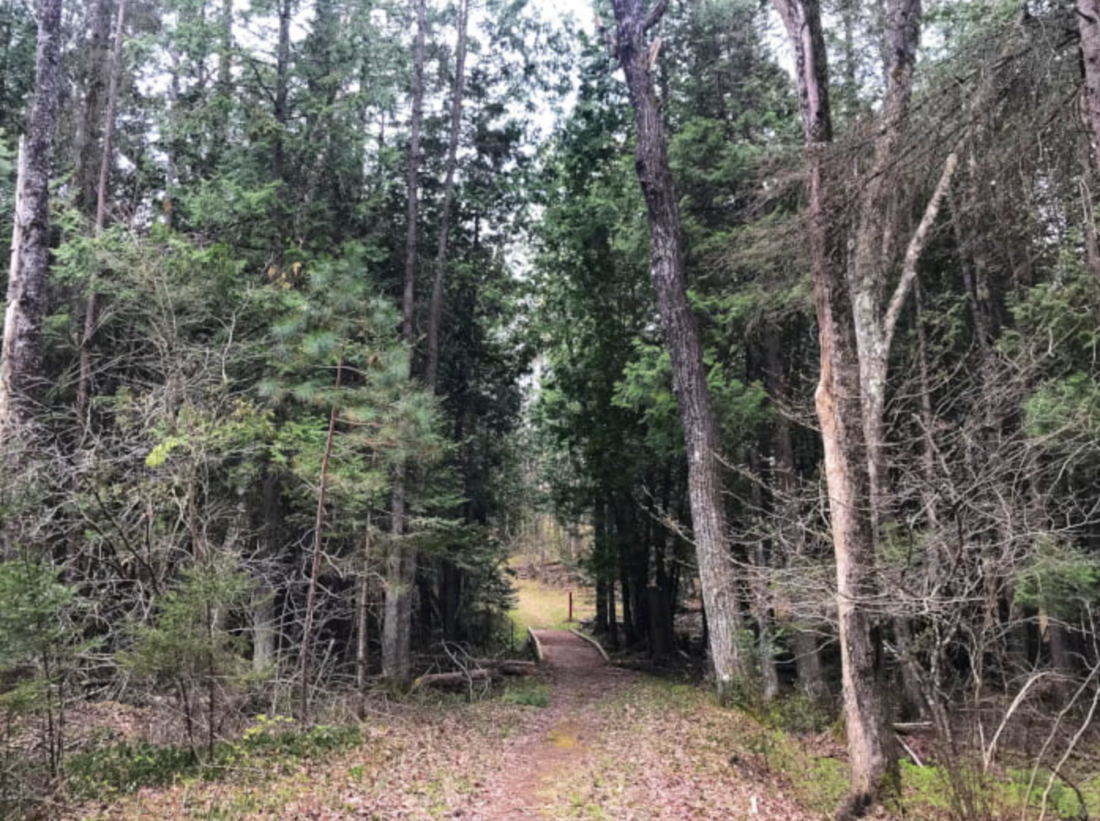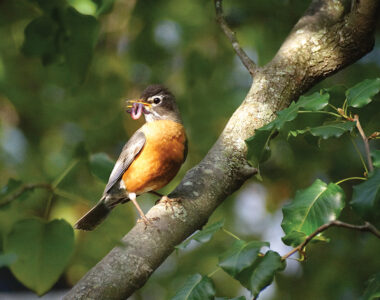DNR plans forest management at Chippewa Hills Pathway

Courtesy Photo A trail in the Chippeway Hills Pathway trail system in Hubbard Lake is seen in this photo provided by the of Michigan Department of Natural Resources.
ALPENA — Chippewa Hills Pathway trail system, located in Hubbard Lake, will undergo clear-cutting and thinning over the next five years, according to the Michigan Department of Natural Resources (DNR) and Dale Parris, DNR Forest Resources Division forester.
Planned harvests of timber in Chippewa Hills Pathway trail system includes aspen and oak clear-cuts, thinning of red pine, and irregular thinning of oak-aspen stands, according to a press release from the DNR. During these harvest operations, sections of the trail system will be closed.
Parris told The News that the goal of the forest management initiative at Chippewa Hills Pathway is to maintain and improve forest health, as well as “promote healthy forests into the future.”
Parris explained that oak wilt is a growing issue at Chippewa Hills Pathway and clear-cutting the oak and replanting with red pine will mitigate the further spread of the disease.
“There’s oak wilt pockets that are spreading into each other,” Parris said. “What we’re trying to do … with some of the oak clear-cuts where we’re planting red pine … is to slow the spread of oak wilt.”
The DNR explained that clear-cuts are effective forest management tools that can promote forest health. Further, clear-cuts can minimize the spread of invasive species and create and improve wildlife habitats.
At the north end of the trail system, aspens that are aging out will be removed, with the remaining oak being thinned, according to the release. This is an attempt to minimize extensive clear-cutting operations within the trail system.
The DNR plans to plant red pine to replace clear-cut oak due to oak wilt, an invasive disease that kills primarily red oak but can affect white oak as well. According to the DNR, this could help slow the spread of the disease. Oak and red maple regenerate through stump spouts, and the DNR states that clear-cutting is an effective strategy to initiate regeneration of these tree types.
According to the DNR, strategic efforts to manage the Chippewa Hills Pathway trail system will be contingent upon damage caused by the March ice storm. The specific timing of the harvests will depend on contract length, wood producer schedule, forest health, and species-related restrictions.
Parris told The News that red pine generally has a quick regeneration cycle. He also explained that the oak have reached an age at which they would generally be clear-cut.
“It can vary depending on your soil type … the best luck we have for replacing oak is actually to clear-cut it,” Parris said. “A lot of this stuff has been thinned in the area. Not necessarily in the trail system, but just to the east of the trail system … to get new oak regrowth, the best way for us to do it in this area … it doesn’t seem to be growing by acorns. So if we clear-cut it, we can get stump sprouts.”
Parris explained that there are many checks when it comes to forest management to ensure that ecosystems are not disrupted by clear-cutting and replanting. This involves working with DNR forestry adjacent departments to ensure forest management doesn’t harm the forest that the DNR is trying to protect.
“The DNR is not just conservation officers,” Parris said.
Parris stated that the DNR forestry division has both Sustainable Forest Initiative (SFI) and Forest Stewardship Council (FSC) certifications that require state foresters to comply with forestry management best practices.
Throughout the process, Parris has also worked closely with the Thunder Bay Trails Association.
Kayla Wikaryasz can be reached at 989-358-5688 or kwikaryasz@TheAlpenaNews.com.



